IPC-6012和IPC-A-600在PCB生产中的重要性
IPC (Institute of Printed Circuits) 是一个服务于 PCB 和电子组装行业的全球贸易协会。 IPC 通过执行一些检查指南来验证制造的 PCB 和 PCBA 的质量。 IPC 有几个指南,PCB 制造商在制造 PCB 时必须遵守这些指南。两个最主要的 IPC 指导文件是 IPC-6012 和 IPC-A-600。 IPC-6012 涉及刚性 PCB 的鉴定和性能规范。另一方面,IPC-A-600 涉及 PCB 的可接受性。最近,IPC-A-600 似乎是使用最频繁和被广泛接受的文件。本文重点介绍了 IPC-6012 和 IPC-A-600 在 PCB 生产中的重要性。
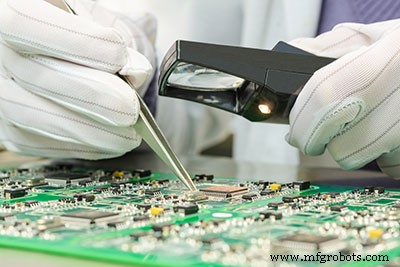
1.什么是IPC?
印刷电路协会 (IPC) 是指导电子互连行业的知名国际组织。它是通过在该行业开展业务的企业必须遵循的变化和标准来实现的。 IPC 是一个专门的协会,其成员已增加到 4,000 多家成员公司。
印刷电路研究所代表了行业的基本要素/维度,例如设计、PCB 制造、电子组装和最终测试。印刷电路协会是一个会员驱动的实体。出于这个原因,它是行业标准、市场研究、培训和公共政策宣传的来源。
此外,印刷电路研究所还支持多个项目,以满足全球电子行业近 2 万亿美元的需求。 IPC 成立于 1957 年,总部位于伊利诺伊州,拥有多项 PCB 标准,PCB 制造商必须始终遵守这些标准。
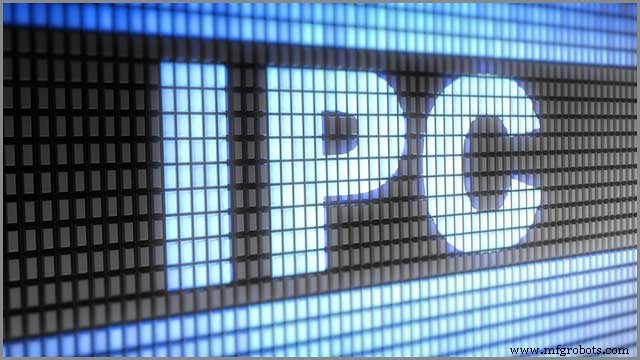
(ipc的高科技图片)
2。为什么我们需要进行IPC验证?
您是否曾尝试设计 PCB,然后将其发送给您的制造商,却发现他们无法制造它,因为您忽略了 IPC 标准?您并不孤单,因为这是许多 PCB 设计人员几乎每天都面临的问题。如果您想确保您的电路板生产没有任何延误或困难,您必须遵守 IPC 标准。
但为什么 IPC 标准很重要?
是否需要遵守 IPC 标准? IPC 标准之所以重要有几个根本原因。首先,IPC 标准帮助设计人员和制造商在制造产品之前节省大量时间。通过进行 IPC 验证,设计人员和 PCB 制造商可以节省大量在召回事件中返工所需的时间。
此外,制造可靠、安全和高性能的 PCB 需要在整个生产过程中关注细节和对质量的一些承诺。通过遵守 IPC 标准,印刷电路板可以轻松实现这一目标。对于制造满足甚至超过客户期望的可靠和高质量产品的公司来说,遵守 IPC 标准是必要的。
通过遵守 IPC 标准,公司将受益于产品质量和可靠性的提高。
反过来,这将使公司具有竞争力和盈利能力。此外,它带来了增强的沟通。通过遵守这些标准,公司可以改善内部和外部的沟通渠道。 IPC 标准确保每个人都使用相同的术语,同时就设定的期望达成一致。
此外,通过坚持IPC标准,正确的PCB服务提供商。值得庆幸的是,有许多 PCB 制造公司都确信可以降低 PCB 制造成本。随着质量的提高和沟通不畅,返工和延误的可能性很小甚至没有。除了新的机会外,IPC 标准还带来了公司声誉的提高。遵守国际公认的标准,例如来自 IPC 的标准,为公司提供了即时的信誉。
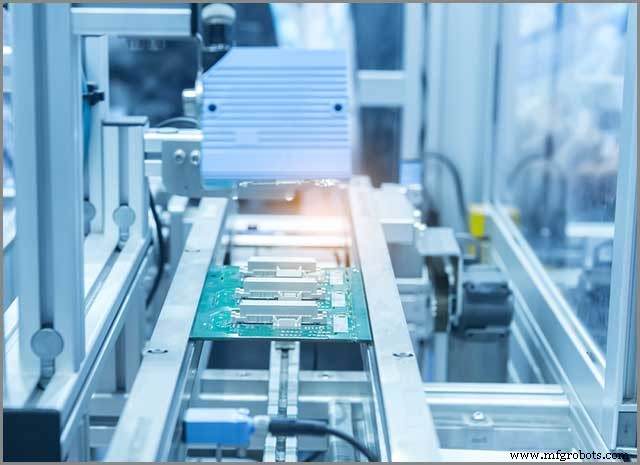
(微芯片生产厂)
3。 PCB制造的IPC组装标准
PCB制造商必须始终遵守许多IPC标准。然而,如前所述,最广泛使用和接受的一种是 IPC-A-6012。如果您还记得的话,IPC-A-6012 涉及电子组件的可接受性。虽然所有 IPC 标准都是必不可少的,但无论当前情况如何,您都不能忽视其中一些标准。但这并不意味着其余的都是无用的或不值得特别关注。一些最基本的包括:
IPC-6012 – 刚性印制板的鉴定和性能规范
IPC 6012 是一个标准,用于建立和定义 HDI 和无源/有源 PCB 要求的性能和资格。这些标准确定了木板的类型,同时描述了 1、2、3 和 3A 类木板应满足的条件。
IPC-A-600——印制板的可接受性,检查文件
IPC-A-600 被大量使用,并且是 IPC PCB 行业中最被接受的形式之一。除了可接受的硬件安装方法外,IPC-A-600 还围绕电子组件的处理展开。这不仅仅是 IPC-A-600 标准的全部内容。它还涉及通孔和表面贴装电路板的焊接和许多其他方面的令人满意的结果。
IPC-A-630-电子外壳制造
IPC-A-630 是电子外壳制造、检查和测试的可接受性标准。这是一个简单的标准,提供了制造、检查和测试电子外壳所需的要求。 IPC-A-630 指导最终用户(尤其是制造商)制造可靠且功能正常的产品。
IPC 7711 / 7721C-电子组装返修
您的合同制造商将不得不使用或依赖本文档中的信息来维修或返工您的 PCB 组件以符合 IPC 标准。顾名思义,IPC 7711/7721C 就是关于电子组装的返工。如果您的设计不符合要求的标准,您的合同制造商可能必须对其进行维修或返工。
如前所述,还有许多其他 IPC 标准/规范适用于 PCB 快速原型设计。 3D PCB 打印不仅可以制造 PCB,还可以进行印刷电路板组装(PCBA)。但是,上面提到的四个是一些最基本的。以上是信誉良好和可靠的合同制造商必须使用的最基本的. 上面提到的四个可以确保你的板子的成功和正常的功能。
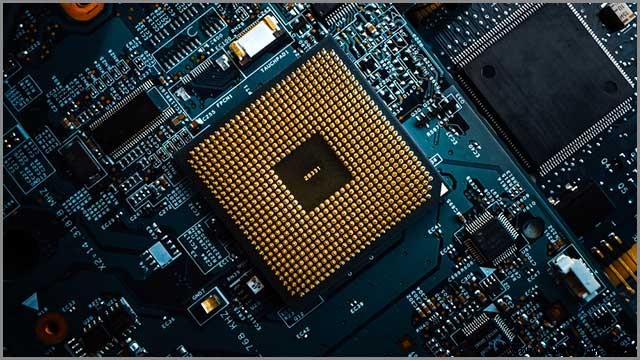
(带CPU处理器插槽的电脑主板)
4。 IPC-6012和IPC-A-600的区别
IPC-6012 和 IPC-A-600 标准之间的一些显着差异值得注意,如下节所示:
4.1 IPC-6012是性能规范
IPC-6012 更多的是一种性能规范。作为性能规范,IPC-6012 定义了除了每个 PCB 类别所需的规范之外的默认要求。
4.1.1。分类:1 类、2 类和 3 类
1 类是由有限寿命和“简单”功能组成的通用电子板。这些简单的功能是您可以在遥控器等设备中找到的功能。第 2 类适用于专用电子产品。在这里,您可以期望这些板具有更长的使用寿命,这意味着您可以在计算机、空调或电视屏幕中使用它们。最后,还有第 3 类产品。与 1 类和 2 类电路板相比,这些是略微严格的不耐受性。它们在可靠性方面很高,并且在医学和军事行业中发现了很多适用性。
4.1.2 IPC-6012的部分规范
以下是 IPC-6012 值得注意的一些独特规格:
维度
除非在规格或图纸中指定,否则印刷电路板必须满足 IPC-6012 标准中要求的最小尺寸。
可焊性
可焊性是指金属被熔融焊料润湿的速度。根据IPC-6012标准,所有批次的印刷电路板都必须经过可焊性测试。根据 IPC-6012 标准,可焊性差是一个重大缺陷。
视觉
所有印刷电路板都必须进行目视检查。在产品发布之前,目视检查或最终质量检查是必要的。除非另有说明,否则所有面板均需进行目视检查。
导体宽度和间距
导体宽度和间距是指两个相邻铜特征之间的最小气隙。通常,对导体和宽度间距的要求应小于 0.007 英寸。任何大于或小于 0.007 英寸的东西都是不合格的。
导体表面
针孔和刻痕在 2 类和 3 类印刷电路板的电压层中是可以接受的。但是,它们的最长尺寸不应超过 1.0 毫米。此外,每侧不应有超过四个导体表面。
清洁度
根据 IPC-6012 标准,清洁度是必须的。在这里,所有印刷电路板必须在应用阻焊涂层之前进行清洁。不应允许含有污染物的不洁板在市场上出现。在应用阻焊涂层之前和之后的清洁度是必须的。
结构完整性
根据 IPC-6012 标准,所有 PCB 都必须满足几个结构完整性方面的要求。根据 IPC-6012 标准,所有印刷电路板都必须满足结构完整性要求,尤其是热应力评估测试试样。
4.1.3 生产设计流程
IPC-6012 标准规定了应该进入 PCB 生产设计的流程。此处,整个焊盘和间距规格应在建议的公差范围内。此外,钻孔必须满足所需的尺寸和质量要求。阻焊层规格也必须在推荐的公差范围内。
4.1.4 性能要求更精准
对于 IPC-6012 标准,性能要求更加准确。当谈到性能要求时,用户需要考虑供应商原则上必须提供什么。它还指出了所用材料的类型以及电路板为证明其功能而进行的测试。
4.1.5 印制板尺寸要求内部检验:
孔尺寸——基于 IPC-6012 标准,标准 PCB 的孔尺寸应为 0.8 毫米直径。大多数制造商通常建议使用 0.040 英寸的孔,其直径精确为 1.00 毫米。
模式准确性和模式特征准确性——模式准确性将用户移动性的规律性调整为真实用户移动性。提高模式准确度的水平可以改善用户的移动模式。对于 IPC-6012 标准,图案精度和图案特征精度至关重要。 PCB 中的所有路径必须始终保持一致。
环形分线(内部和外部)——环形环的主要目的是在铜迹线和通孔原子之间建立良好的连接。环形环用作电路的锚。 IPC-6012 有关于环形圈分断的规范。
在设计阶段,由于环的宽度不足,会发生环状环破裂。根据 IPC-6012 标准,最小环形圈宽度需要为 0.007 英寸。这将防止内部和外部突破。
4.1.6 用于评估PCB结构的完整性
IPC-6012 标准用于评估印刷电路板结构的完整性。 PCB 制造商需要注意的 IPC-6012 下的一些完整性问题包括:
电镀完整性和空隙
有关沉积的问题可能会损害印刷电路板孔壁内的互连。最后,印刷电路板可能会出现故障或无法按预期工作。
层压板空隙和裂缝
层压板空洞和尝试是 PCB 制造过程中的常见问题。层压板孔是在通常应该包含一些环氧树脂的区域中没有环氧树脂。另一方面,在某些升高的应力过程中,PCB 内部可能会出现裂纹。
这可以通过热或机械方式发生。 IPC-6012 标准文件有关于如何最小化或避免层压板空隙和裂缝的规范。
分层
分层是一种以材料破裂成层为特征的失效模式。 IPC-6012 文件包含有关如何避免分层的措施。如果你想避免分裂成层,正确的材料是必要的。
掀背车
掀背车是从钻孔的侧壁去除环氧树脂的过程。这样做的原因是为了确保印刷电路板各层之间具有出色的电气连接性。
IPC-6012 标准要求使用的环氧树脂在需要时应易于去除。环氧树脂材料应该是在需要去除时容易去除的材料。保持层之间良好的电气连接对于信号路由至关重要。
Smear removal
In the manufacture of printed circuit boards, smear removal is necessary. The purpose of conducting smear removal is to get rid of smear on the hole wall to allow the formation of electrical connections in the circuit’s inner layer.
Additionally, smear removal enables the construction of adequate hole wall adhesion. Based on IPC-6012 standards, smear removal is necessary before through-hole plating.
Hole breakouts, internal and external
Hole breakouts, both internal and external, are conditions where the land doesn’t surround holes. The Hole breakouts are problems that a lot of manufacturers face when manufacturing PCBs. Hole problems can occur both internally and externally on a printed circuit board.
Lifted pads
On a printed circuit board, lifted places may occur. Raised pads do occur as a result of a combination of physical and thermal issues. If the cushions don’t sit correctly, they may bring about the failure of parts of the PCB or the entire PCB.
Lifted pads naturally happen when attempting to de-solder parts/components from the board. It may also occur if you overwork the joint to an extent where adhesive bonds between the board and the copper are damaged.
Plating thickness
Plating thickness is essential in the production of PCBs. When it comes to circuit boards, consistency matters a lot. Plating thickness is a necessary standard for circuit boards. While there’s an official plating thickness standard, there are sizes that are highly common and preferred by manufacturers.
Based on IPC printed circuit board standards, the plating thickness should be 1.57 mm, or approximately 0.062 inches. Even though today’s PCBs’ design and manufacture tend to be smaller, the plating thickness remains the most common thickness for almost all formats.
Today, it’s more accurate to say that there’s a range of standard or typical PCB plating thickness. Some of the most common ones include 0.0031 inches (0.78 mm), 0.093 inches (2.36 mm), and 0.062 inches (1.57 mm).
Foil thickness, internal and external
On printed circuit boards, copper foils act as the base copper thickness applied on inner and outer layers. The IPC standards allow up to a maximum of 10% reduction in foil thickness.
According to IPC-6012 standards, foil thickness (both internal and external) matters a lot. A majority of printed circuit board manufacturers typically use sheets of ½ oz.
Metal cores
A metal core printed circuit board is a type of a PCB consisting of metal materials as its base. The purpose of using metal is to ensure the diversion of heat away from some of the board’s most critical components. Some of the essential areas include the metallic core and the metal heatsink.
IPC-6012 standards indicate that evenly distribution of layers must be on every side of the metalcore in multilayer PCBs. As an example, in a 12-layer board, the metal core must be at the center consisting of 6 layers at the bottom and six layers of the metal core at the top.
4.1.7 Features
As mentioned earlier, IPC-6012 standards are more of a performance specification standard. IPC-6012 standards define default requirements in addition to the specification requirements necessary for each class of printed circuit boards. Some of the essential features here include matters to do with cleanliness, solderability, and conductor surfaces, to mention but a few.
4.2 IPC-A-600 inspection documents
As mentioned earlier, IPC-6012 differs from IPC-600 in several ways. Just like IPC-6012 standards, there are IPC-A-600 standards that PCB manufacturers must comply with at all times. IPC-A-600 has standards for PCB artistry. The IPC-A-600 document consists of comprehensive acceptance criteria for acceptable, target, and nonconforming conditions on bare PCBs.
As mentioned earlier, the IPC-A-600 is IPC’s most widely used standard that IPC has managed to publish. Such makes the IPC-A-600 a natural choice for certification. As mentioned earlier, IPC-6012 standards differ from IPC-A-600 standards. The following are some IPC-A-600 standards that make it different from IPC-6012 standards:
4.2.1 Have a lot of pictures and drawings
The IPC-6012 doesn’t contain plenty of photos and graphics. Photographs and illustrations are necessary when it comes to the design and manufacture of PCBs. The difference is that IPC-6012 doesn’t contain plenty of pictures and photos, unlike IPC-A-600. Since IPC-A-600 contains many photographs and drawings, a lot of designers prefer it more than IPC-6012 standards.
If you want to design and manufacture IPC PCBs without a lot of trouble, then you may have to stick with boards that comply with IPC-A-600 standards. With such, you’ll get pictures of how to go about doing everything.
4.2.2 Designed for inspection purposes
IPC-A-600 standards give a printed circuit board assembler the information to do a quality job based on incoming inspection. IPC-A-600 emphasizes on design for inspection (DFI). Design for inspection is a principle of engineering proposing that inspection measurements and methods used in conformity certification require early consideration in product design.
Knowing acceptable conditions means that assemblers won’t have to dig deeper into their pockets if product recalls happening. Getting to know nonconforming conditions save printed circuit board assemblers from costly component mounting operations.
When it comes to PCBs’ design and manufacture, IPC-A-600 emphasizes a lot on Design for Inspection (DFI). Among other things, Design for Inspection in the design and manufacture of PCBs brings about lower costs and high-profit margins. The inability to consider matters to do with Design for Inspection (DFI) can come with high buried costs.
4.2.3 Features
Just like IPC-6012, IPC-A-600 has got some features too. Some of the components or requirements here include plated through-hole requirements, etched dielectric material standards, resin recession, and matters to do with voids.
5。 How to choose IPC-A-600 or IPC-6012 standard
Most printed circuit board designers seem confused when it comes to choosing between IPC-A-600 and IPC-6012 standards. But the choice between the two depends on the size and the requirements of your project. Manufacturers must comply with several comprehensive inspection specifications found in IPC standards. Designers also need to be careful regarding the design rules required across IPC standards.
IPC-A-600 and IPC-6012 are two of the most primary guiding documents, also going by the name performance and inspection documents. The IPC-6012 is the specification, with the IPC-A-600 being the visual representation of the IPC-6012 form. Here are a few essential things to note when it comes to choosing between IPC-A-600 and IPC-6012 standards:
Both standards are essential to get a high-quality PCB product
The Both IPC-A-600 and IPC-6012 are crucial when you want to get high-quality PCBs. Both of them have features and specifications that PCB producers must satisfy.
Even though IPC-A-600 may contain superior standards compared to IPC-6012 standards, both are essential for producing high-quality PCBs. The choice between the two depends on the magnitude and requirements of your project.
Product choice
As the name suggests, product choice involves choosing or selecting the best product among the available options. Depending on the standards used when making a PCB, you’ll undoubtedly have to choose between a PCB made in compliance with either IPC-6012 or IPC-A-600 standards.
For the best-printed circuit boards, you may have to go with those manufactured under IPC-A-600 standards. The IPC-A-600 standards are slightly superior to IPC-6012 measures. As you may be well aware, the IPC-6012 is a specification that establishes and defines the performance and qualification requirements needed for the fabrication of rigid printed circuit boards.
IPC-6012 determines the desired rigid board requirements
IPC-6012 for selecting the printed circuit board’s desired size. The conditions here do apply to almost all types of PCBs.
The types of PCBs here include multilayer PCBs, single-sided, active/passive PCBs, HDI, and metal core PCBs. Being a performance specification, the IPC-6012 defines the default requirements in addition to the specifications required.
IPC-A-600 standards find heavy use for upcoming inspection specifications
IPC-A-600 standards are slightly superior to IPC-6012 measures. They are used specifically for upcoming specifications on a printed circuit board.
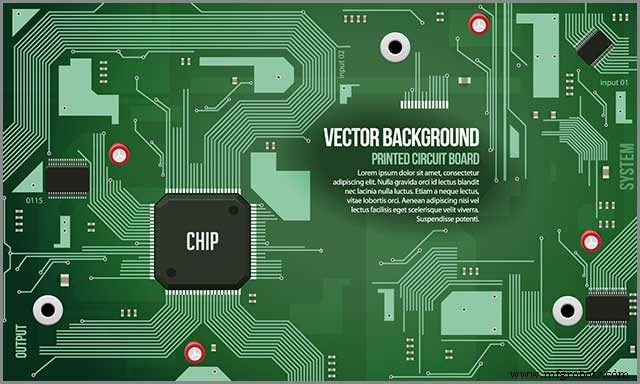
(Printed circuit boards and chips)
6。 IPC 6012– Determine product acceptance criteria with suppliers
Acceptance criteria are the conditions that a product must satisfy or meet to be accepted by customers, users, or other stakeholders. In other words, these are some pre-established requirements or standards that a particular product must meet. IPC-6012 and IPC-A-600 determine product acceptance criteria with suppliers. They consist of measures and means that a product must meet to be deemed acceptable.
For instance, the IPC-A-600 and IPC-6012 contain several acceptance quality levels that determine the maximum number of defective units, beyond which a batch may face automatic rejection. Acceptance limits determine how many samples need to be picked and put under inspection and the boundary between refusal and acceptability for defective products.
Additionally, IPC-A-600 and IPC-6012 have several guides that manufacturers use to provide a standard methodology for inspecting the printed circuit boards. A product must meet some aspects:cleanliness, solderability, conductor width, and spacing, to mention but a few.
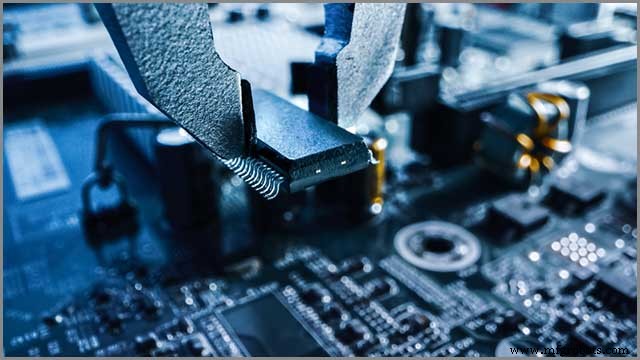
(Advanced PCB board that meets IPC regulations)
总结
Almost all printed circuit board manufacturers claim to be IPC-6012 or IPC-A-600 compliant. Most claim to have the ability to manufacture boards that meet any of the classes. But not all of them are who they say they are. But we at WellPCB are IPC-6012 and IPC-A-600 compliant. We employ IPC-6012 to establish the requirements of our printed circuit boards.
We also use IPC-A-600 for upcoming inspection specifications. Contact us for more information and other capabilities that we have. If you want to know more about our level of quality and certifications, then give us a call. We would be delighted to schedule an informative tour for you.
工业技术


